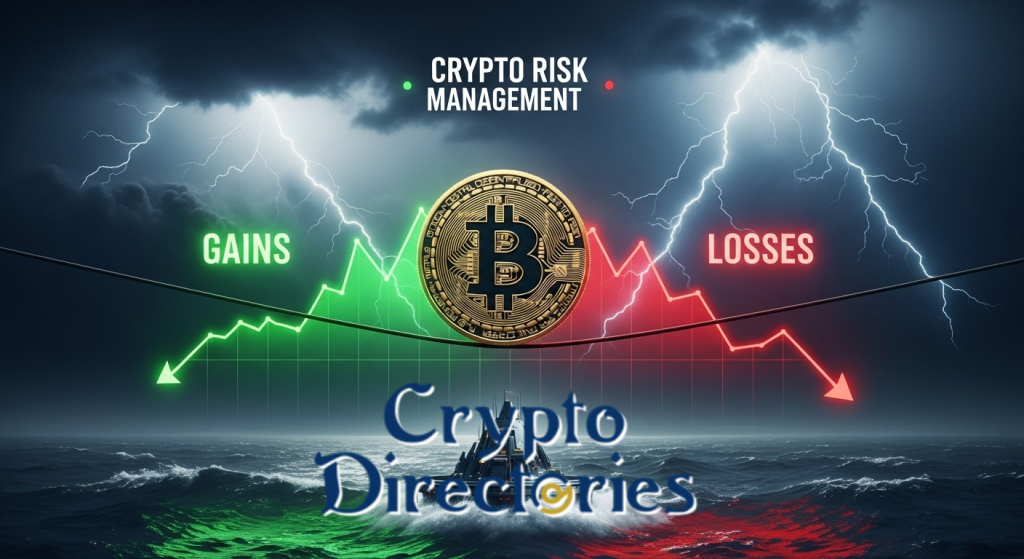On this planet of cryptocurrency, the place costs can rise or fall dramatically inside hours, danger administration is not only a technique — it’s a necessity. Whether or not you’re a seasoned dealer or a brand new investor, having a transparent plan to handle danger is crucial to outlive and thrive within the unstable crypto panorama.
This information will stroll you thru the basics of crypto danger administration, greatest practices, instruments, and strategies that can assist you keep away from frequent pitfalls and make smarter selections.
⚠️ What Is Threat Administration in Crypto?
Threat administration in cryptocurrency refers back to the apply of figuring out, analyzing, and minimizing potential monetary losses in buying and selling or investing.
In a market identified for enormous features and equally huge losses, defending your capital is simply as essential as rising it.
📊 Why Threat Administration Issues in Crypto
- Excessive Volatility: Costs can swing 20%+ in a day.
- Leverage Risks: Leveraged trades can amplify losses.
- Emotional Selections: Concern and greed usually drive poor decisions.
- Scams and Hacks: Unregulated areas expose customers to safety threats.
With out a danger administration plan, even worthwhile methods can result in eventual break.
🔑 Key Rules of Crypto Threat Administration
1. Solely Make investments What You Can Afford to Lose
By no means danger your lease, financial savings, or emergency funds.
2. Use Place Sizing
Determine how a lot of your portfolio to danger on a single commerce. Many merchants restrict this to 1–3% per place.
3. Set Cease-Loss Orders
Robotically shut trades that fall under a sure worth to cap losses.
4. Diversify Your Portfolio
Don’t go all-in on one asset. Unfold your danger throughout:
- Bitcoin and Ethereum
- Altcoins
- Stablecoins
- Actual-world belongings (non-obligatory)
5. Keep away from Excessive Leverage
Whereas tempting, 10x or 50x leverage will increase danger dramatically. Use leverage conservatively.
6. Have an Exit Plan
Know while you’ll take income or lower losses. Don’t depend on feelings.
🧠 Understanding Your Threat Tolerance
Are you risk-averse or a risk-taker? Understanding your private danger profile may help information your funding decisions.
Take into account components like:
- Age and earnings stability
- Monetary targets
- Market information
- Emotional self-discipline
The perfect danger administration plan is one that matches your distinctive profile.
🛠️ Instruments for Threat Administration in Crypto
- Cease-loss and take-profit orders
- Portfolio trackers (e.g., CoinStats, Zerion)
- Threat calculators for leverage buying and selling
- Chilly wallets for long-term storage
- Respected exchanges with insurance coverage options
🤖 Automating Your Threat Technique
Utilizing bots or buying and selling platforms, you possibly can:
- Set automated exit factors
- Rebalance portfolios
- Monitor market situations 24/7
Automation removes emotion — a key consider decreasing pricey errors.
🧩 Frequent Threat Administration Errors to Keep away from
- Ignoring market traits
- Overexposure to at least one coin
- Buying and selling with out a plan
- Chasing losses
- Holding perpetually with out reevaluation
🔗 Associated Perception
Need to discover platforms that help safe, diversified crypto investments?
Take a look at our Crypto Directories — a trusted useful resource for locating verified crypto platforms and instruments that can assist you handle your portfolio with confidence.
✅ Remaining Ideas
Managing danger is likely one of the most neglected — but most essential — points of crypto investing. Whereas everybody desires of hitting it huge, lasting success comes from defending your capital and making sensible, sustainable strikes.
Make danger administration your basis, not an afterthought. Commerce properly, make investments deliberately, and all the time plan for the worst whereas hoping for the most effective.
🔒 Safe your future: Go to CryptoDirectories.com to discover risk-conscious platforms and study extra.
Crypto Risk Management: Protecting Your Portfolio in a Volatile Market

